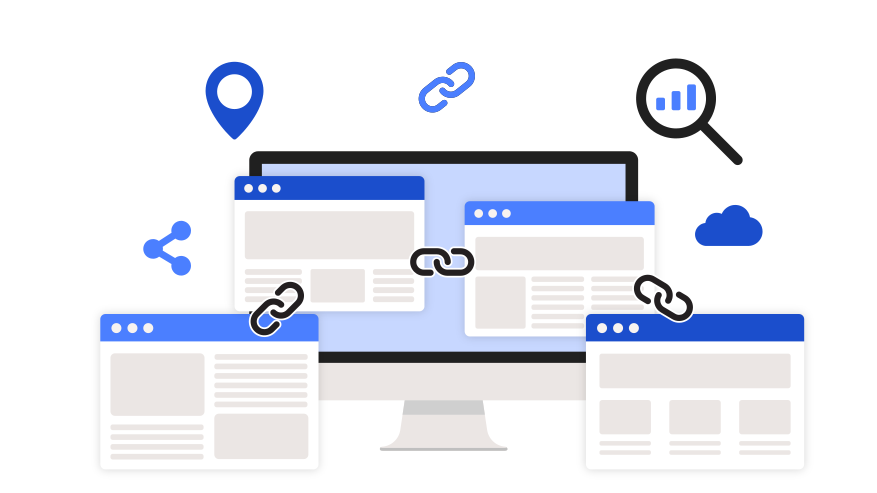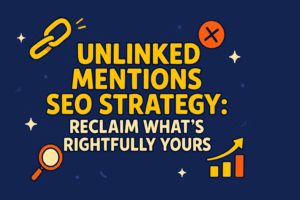
In digital marketing and search engine optimization (SEO), editorial links are a coveted asset. They are often considered the gold standard of backlinks, given their ability to enhance a website’s authority, trustworthiness, and search engine rankings.
This comprehensive guide delves into everything you need to know about editorial links, covering their definition, importance, how to acquire them, and best practices for leveraging their power.
What Is An Editorial Link?

An editorial link is a hyperlink placed within the content by a website owner or editor because they genuinely value the linked content.
It is not paid for or solicited but earned through the quality and relevance of the content. These links often come from reputable, authoritative sources, enhancing the credibility and trustworthiness of the linked page.
They are a critical factor in search engine optimization (SEO), as search engines consider their endorsements of the linked site’s content quality.
Editorial links can improve search rankings, drive organic traffic, and build a website’s reputation and authority in its niche.
Characteristics of Editorial Links
- Natural Placement: Editorial links occur organically within high-quality content. They are not artificially inserted for SEO purposes.
- High Authority: These links often come from authoritative websites, such as news outlets, reputable blogs, or academic journals, enhancing their credibility.
- Contextual Relevance: They are relevant to the embedded content, providing readers with a seamless and valuable reading experience.
- Trust and Credibility: Since these links are editorially given, they signal trust and credibility to users and search engines.
Importance Of Editorial Links

Here are several reasons:
1. SEO Benefits
Editorial links are one of Google’s algorithm’s most influential ranking factors. They contribute to a website’s domain authority (DA) and page authority (PA), which can improve search engine rankings. Since these links come from high-authority sites, they pass on significant link equity.
2. Traffic Generation
Links from famous, high-traffic websites can drive substantial referral traffic. If a reputable site links to your content, its audience will likely visit it, increasing your exposure and potential customer base.
3. Brand Recognition
Being mentioned and linked to by reputable sources enhances your brand’s visibility and recognition. It positions your brand as a trusted authority in your industry, which can lead to further media opportunities and partnerships.
4. Long-Term Value
Unlike paid links or other forms of link building that offer short-term benefits, editorial links provide long-term value. These links will likely remain active for a long time, continually providing SEO benefits and driving traffic.
How To Acquire Editorial Links

Securing editorial links requires a strategic approach centered around creating high-quality content, building relationships, and positioning your brand as an authority. Here are several effective strategies:
1. Create Exceptional Content
High-quality, informative, and engaging content naturally attracts links. Here are some content types that tend to attract editorial links:
- Original Research and Data: Publishing unique research, surveys, and case studies can attract links from websites referencing your findings.
- Comprehensive Guides and Tutorials: In-depth, well-researched guides that thoroughly cover a topic are valuable resources to which other sites may link.
- Infographics and Visual Content: Visual content such as infographics can be easily shared and linked to by other sites looking to illustrate their articles.
- Opinion Pieces and Thought Leadership: Articles that provide unique insights, expert opinions, or controversial viewpoints can spark discussions and attract links.
2. Build Relationships with Industry Influencers
Networking and relationship-building are crucial for earning editorial links. Here’s how to go about it:
- Engage with Influencers on Social Media: Follow industry influencers, share their content, and engage in meaningful conversations to build rapport.
- Guest Blogging: Write high-quality guest posts for reputable websites in your industry. This can lead to editorial mentions and links back to your site.
- Participate in Industry Events: Attend conferences, webinars, and other industry events to network with potential linkers.
3. Leverage Public Relations (PR)
PR and SEO are closely linked. Effective PR strategies can lead to high-quality editorial links. Consider the following PR tactics:
- Press Releases: Distribute press releases about significant company news, product launches, or other noteworthy events. Ensure the news is genuinely newsworthy to capture media attention.
- Media Pitches: Craft compelling pitches for journalists and bloggers. Tailor your pitch to each recipient’s interests to increase the likelihood of coverage.
- HARO (Help a Reporter Out): Sign up for HARO to respond to journalists’ requests for expert sources. If selected, you can gain valuable mentions and links in their articles.
4. Utilize Content Promotion
Promoting your content increases its visibility, which can lead to more editorial links. Here are some content promotion strategies:
- Social Media: Share your content across social media platforms to reach a wider audience and encourage sharing.
- Email Outreach: Reach out to bloggers, journalists, and influencers who might find your content valuable. Personalize your emails and explain why your content is relevant to their audience.
- Content Syndication: To increase your content’s reach, submit it to syndication networks or republish it on platforms like Medium or LinkedIn.
5. Monitor and Replicate Competitor Backlinks
Analyze your competitors’ backlink profiles to identify opportunities. Tools like Ahrefs, Moz, and SEMrush can help you uncover where your competitors are getting their editorial links from. Reach out to these sources with high-quality content or pitch similar ideas to attract links.
Best Practices For Leveraging Editorial Links

Here are some best practices to follow:
1. Maintain High Content Standards
Continually produce high-quality content that adds value to your audience. Consistency in quality keeps your brand on the radar of potential linkers and encourages ongoing editorial mentions.
2. Monitor Your Backlink Profile
Monitor your backlink profile regularly using tools like Google Search Console, Ahrefs, or Moz. This will help you track new links, understand what content attracts links, and identify potential issues, such as toxic backlinks.
3. Nurture Relationships
Keep building and nurturing relationships with influencers, journalists, and industry leaders. Engage with them on social media, share their content, and offer insights or assistance whenever possible. Strong relationships can lead to more editorial opportunities.
4. Optimize Your Content for Linkability
Make your content easy to link to by using clear headings, creating shareable snippets, and ensuring your website’s technical SEO is up to par. Provide embed codes for visual content like infographics to facilitate easy linking.
5. Diversify Your Content Strategy
Diversify the types of content you produce to attract a broader range of editorial links. Experiment with different formats such as videos, podcasts, whitepapers, and interactive content.
6. Use Anchor Text Wisely
When earning editorial links, the anchor text used is crucial. While you cannot control the anchor text of editorial links directly, you can influence it by ensuring your content is well-optimized for relevant keywords and providing suggestions if asked.
Common Mistakes To Avoid
It’s essential to avoid common pitfalls that can undermine your efforts:
1. Paying for Links
Paying for links violates Google’s Webmaster Guidelines and can result in penalties. Instead, focus on earning editorial links through genuine content and relationship-building efforts.
2. Over-Optimizing Anchor Text
Over-optimizing anchor text with exact-match keywords can appear manipulative and may trigger penalties. Aim for natural, varied anchor text that blends seamlessly with the content.
3. Ignoring Link Quality
Not all links are created equal. Prioritize links from high-authority, relevant websites over a high volume of low-quality links. Quality always trumps quantity in link building.
4. Neglecting Content Promotion
Even the best content needs promotion to gain visibility. Neglecting to promote your content can result in missed opportunities to earn editorial links.
5. Focusing Solely on SEO
While SEO is important, don’t forget the broader goals of content marketing and PR. Focus on creating valuable content that serves your audience; the editorial links will follow naturally.
Conclusion
Editorial links are a cornerstone of a robust SEO strategy. They offer unparalleled benefits regarding search engine rankings, traffic generation, and brand credibility.
Acquiring these links requires high-quality content creation, strategic relationship-building, and compelling content promotion.
By understanding the importance of editorial links and implementing best practices for acquiring and leveraging them, you can significantly enhance your website’s authority and visibility.
Remember to focus on creating value, maintaining high content standards, and nurturing relationships within your industry.
With persistence and a strategic approach, you can unlock the powerful potential of editorial links for your digital marketing efforts.
So, what are you waiting for? Start implementing some of these methods today and see how they can help your business or website grow.
If you have any questions about editorial links or other link-building techniques, please leave them in the comment section; we will happily answer them.
I want more tips on improving your website’s SEO. Check out my other blog post.
Thanks for reading 🙂


